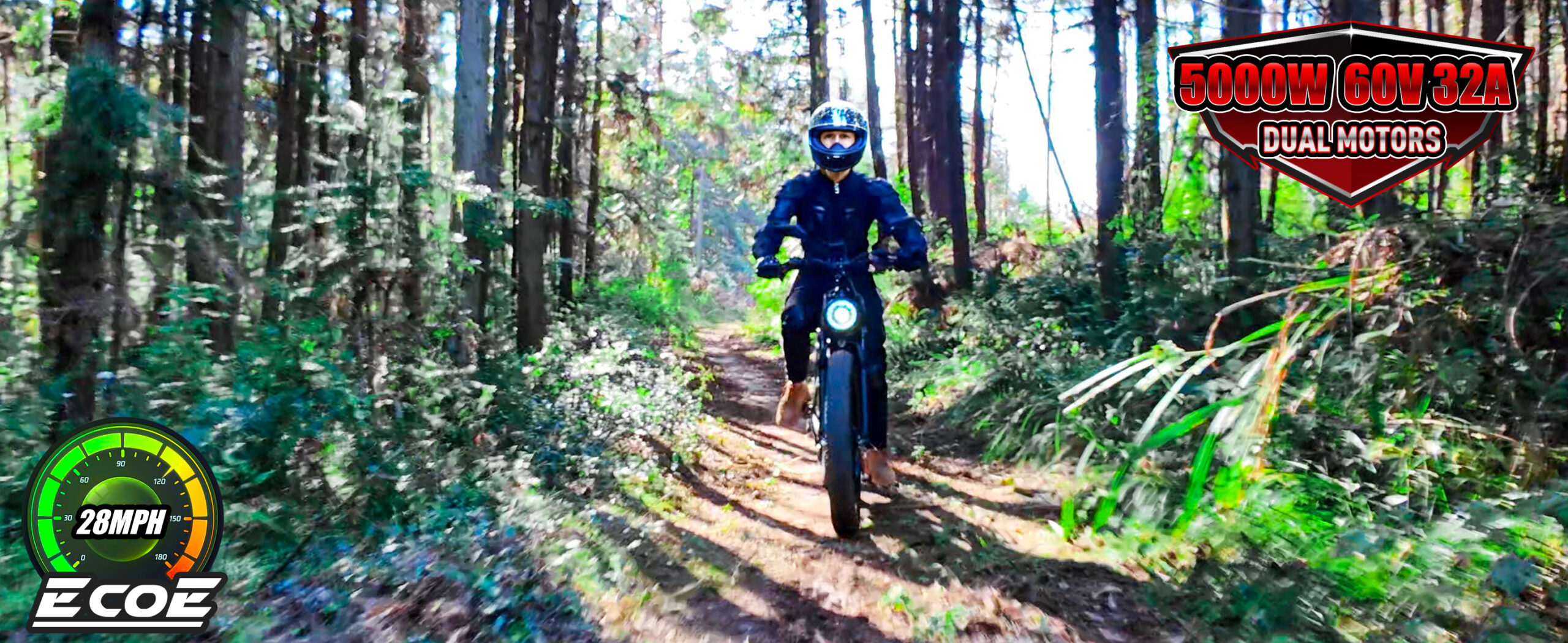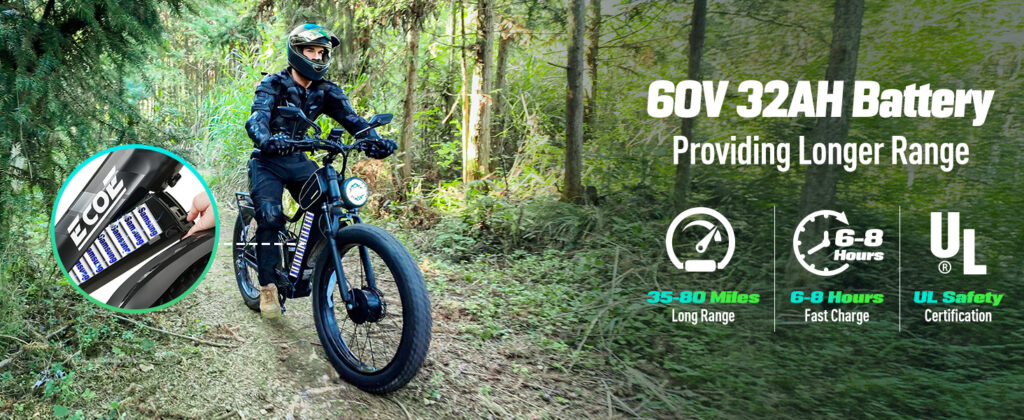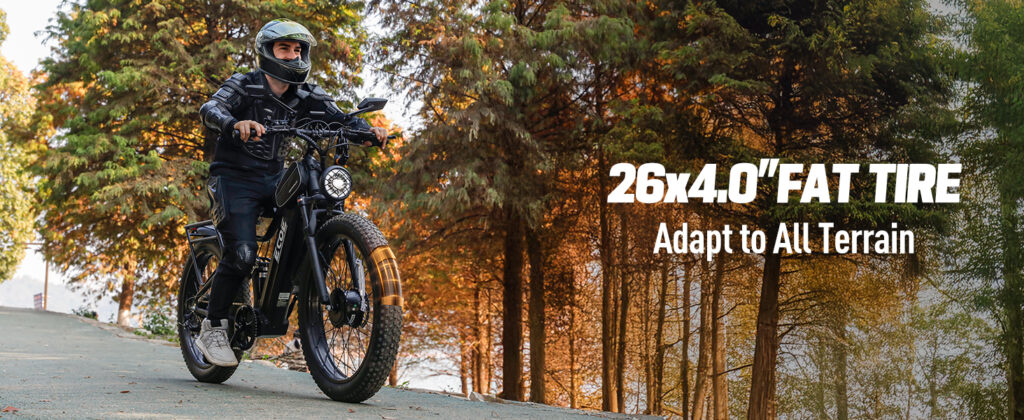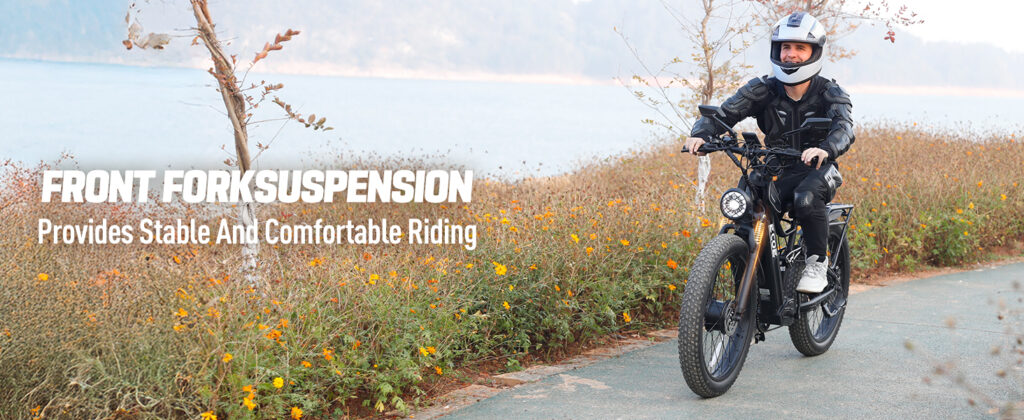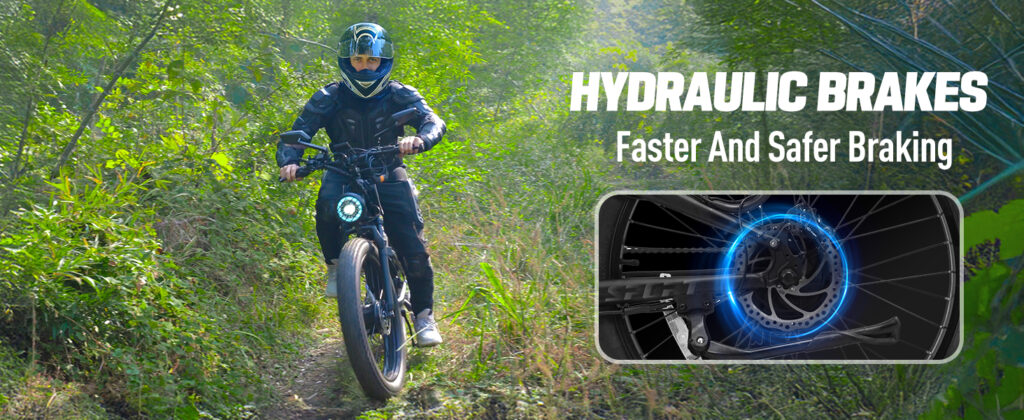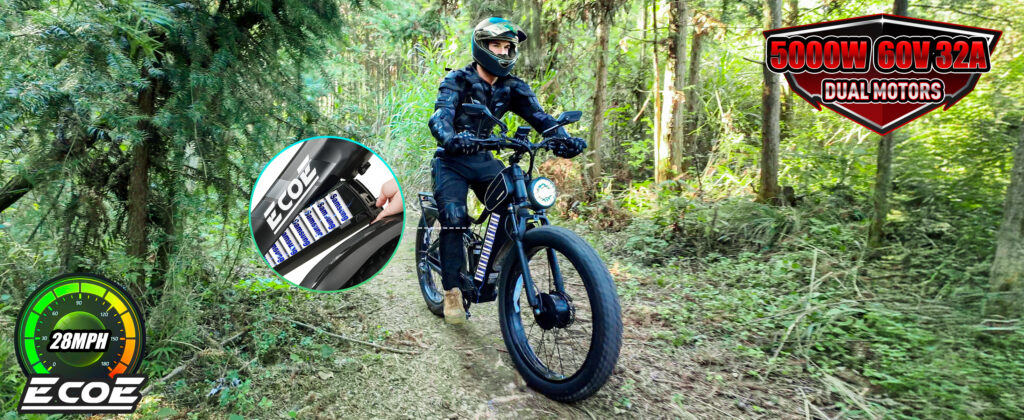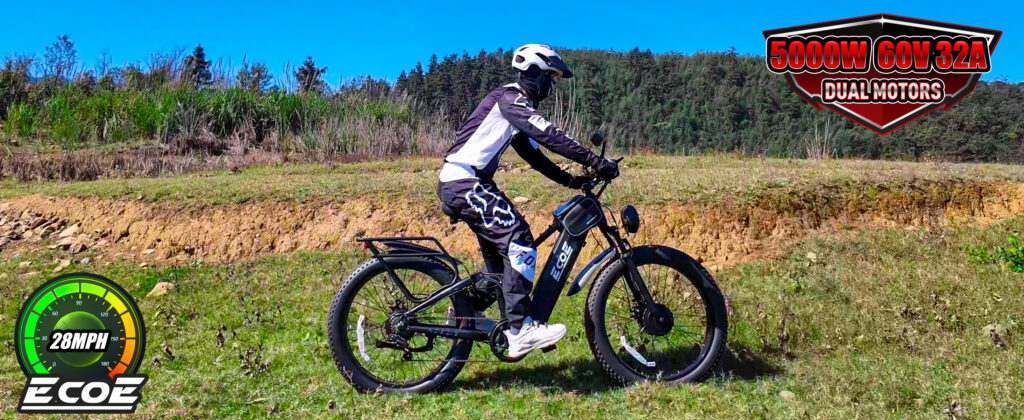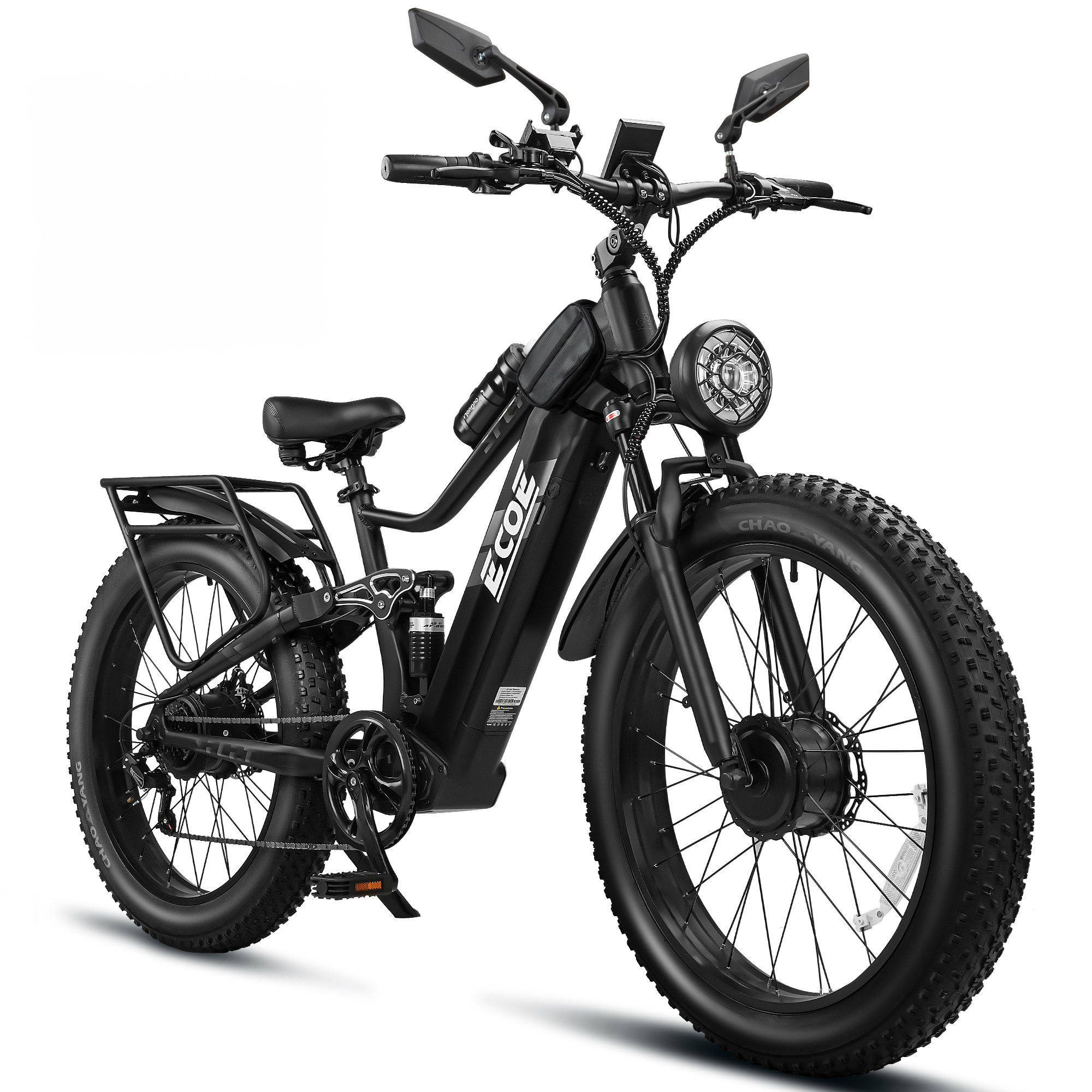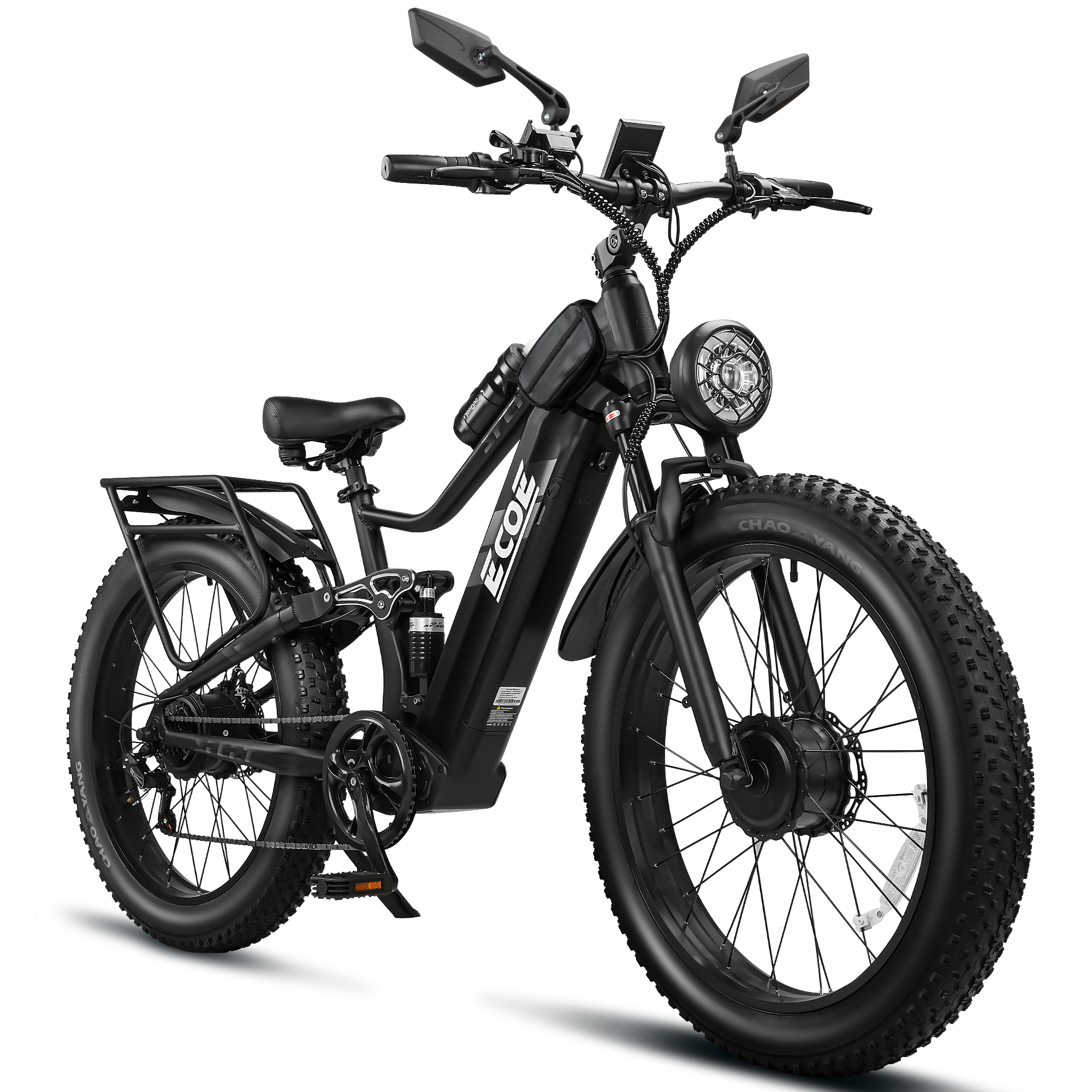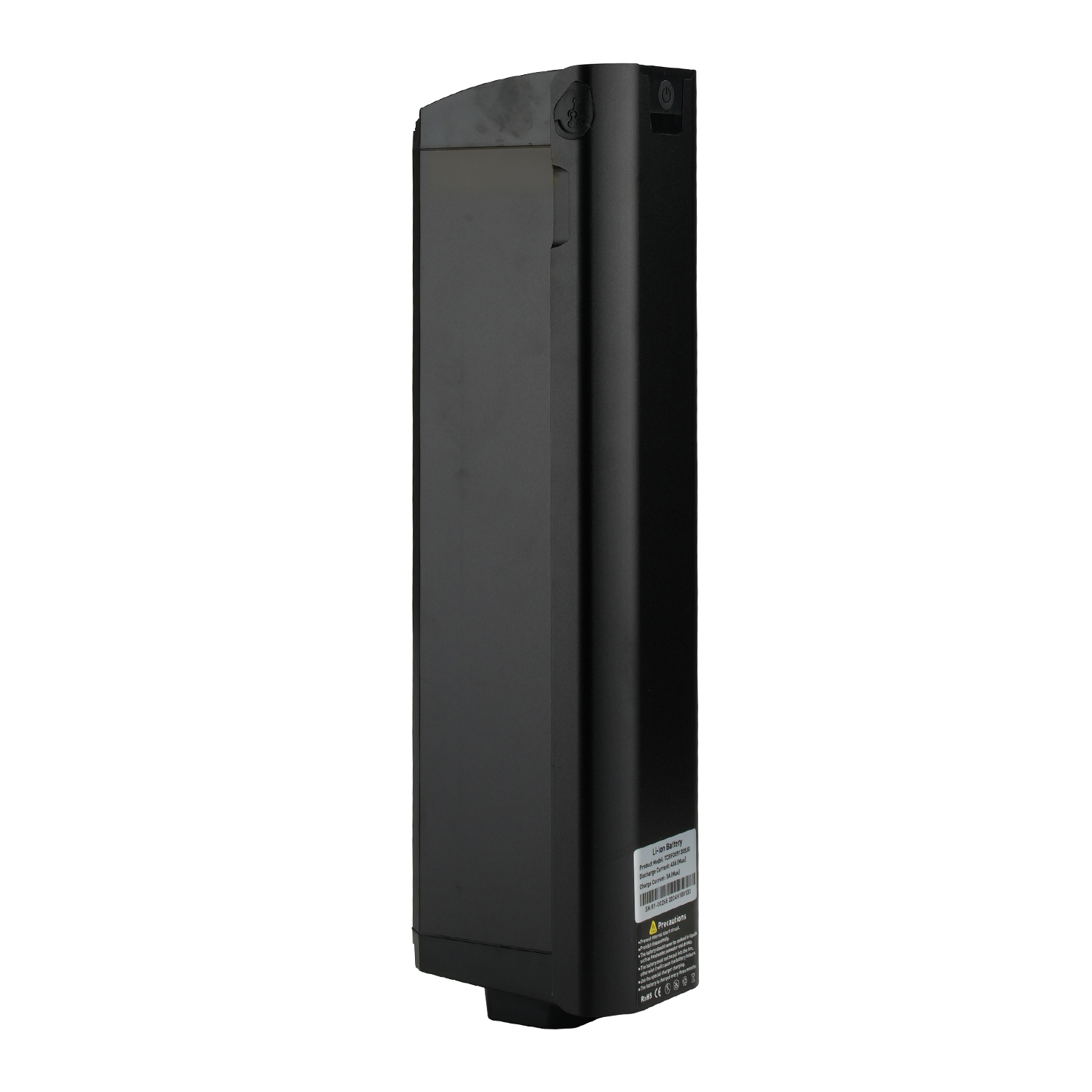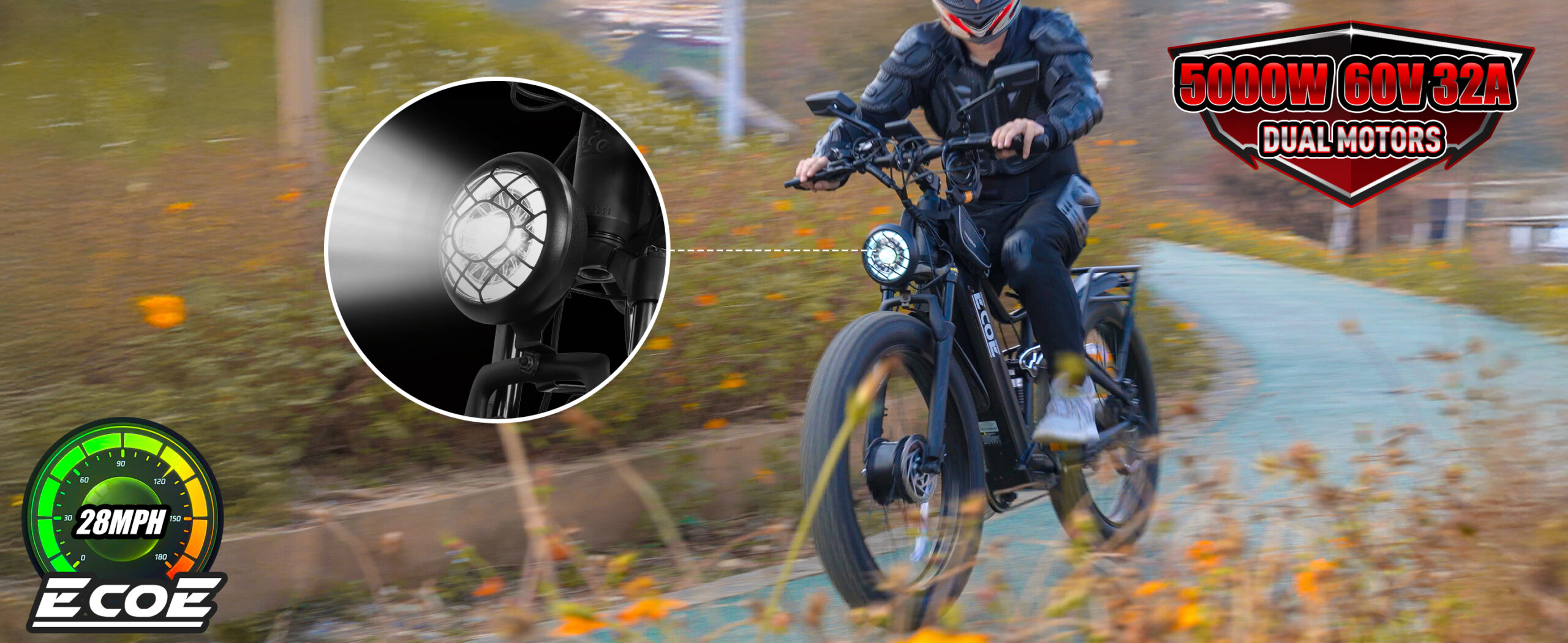
Classification of Electric Bicycles by Regulatory Standards
The EcoE 5000W electric bike Powerful Motor: EcoE is equipped with a 60V 5000W high-speed brushless motor. Due to different loads and road conditions, the electric bike drive system provides adjustable assistance, allowing you to stay healthy, relax, and exercise.Accessories: This electric bike accessory set includes a rearview mirror, water bottle holder and bottle, a sturdy phone mount, and a waterproof phone pouch. The reinforced cargo rack allows you to easily carry extra items needed for your ride. Additionally, if you need more accessories, you can purchase a detachable storage rack, passenger safety seat, trailer, and more.60V 32AH Battery: The bike is equipped with a high-capacity, removable 32AH battery, providing longer range per charge and over 1000 charge cycles. With pedal assist, the fat tire e-bike can travel 35-80 miles, depending on riding mode, load, and terrain. You can also purchase a spare battery for extended trips.Comfort and Versatility: This fat tire electric bike comes with dual front suspension and rear shocks to reduce impact and strain during rides. Its 26-inch wheels, 4-inch tires, and SHIM 7-speed system offer excellent grip across diverse terrains. Front and rear disc brakes ensure safe, responsive stopping, whether on mountain trails or city streets. – Type Parameter Requirements Advantages Disadvantages Ideal Use Cases License Required China Electric Bicycle (Non-Motorized) Max speed ≤25km/h, motor power ≤400W, weight ≤63kg (lead-acid), Beidou positioning (mandatory for commercial use) No license required, low cost, suitable for short commutes Limited speed and range (30–60km) Urban commuting, student/office use, community services None Light Electric Motorcycle (Motorized) Max speed ≤50km/h, motor power ≤4kW, 3C certification required Faster speed (30–50km/h), suitable for medium-distance travel, passenger-carrying allowed (region-dependent) Requires license (F/E), insurance, restricted in some cities (e.g., Beijing Fifth Ring Road) City commuting, food delivery, logistics F/E License Electric Motorcycle (Motorized) Max speed >50km/h, motor power >4kW, 3C […]
Read more
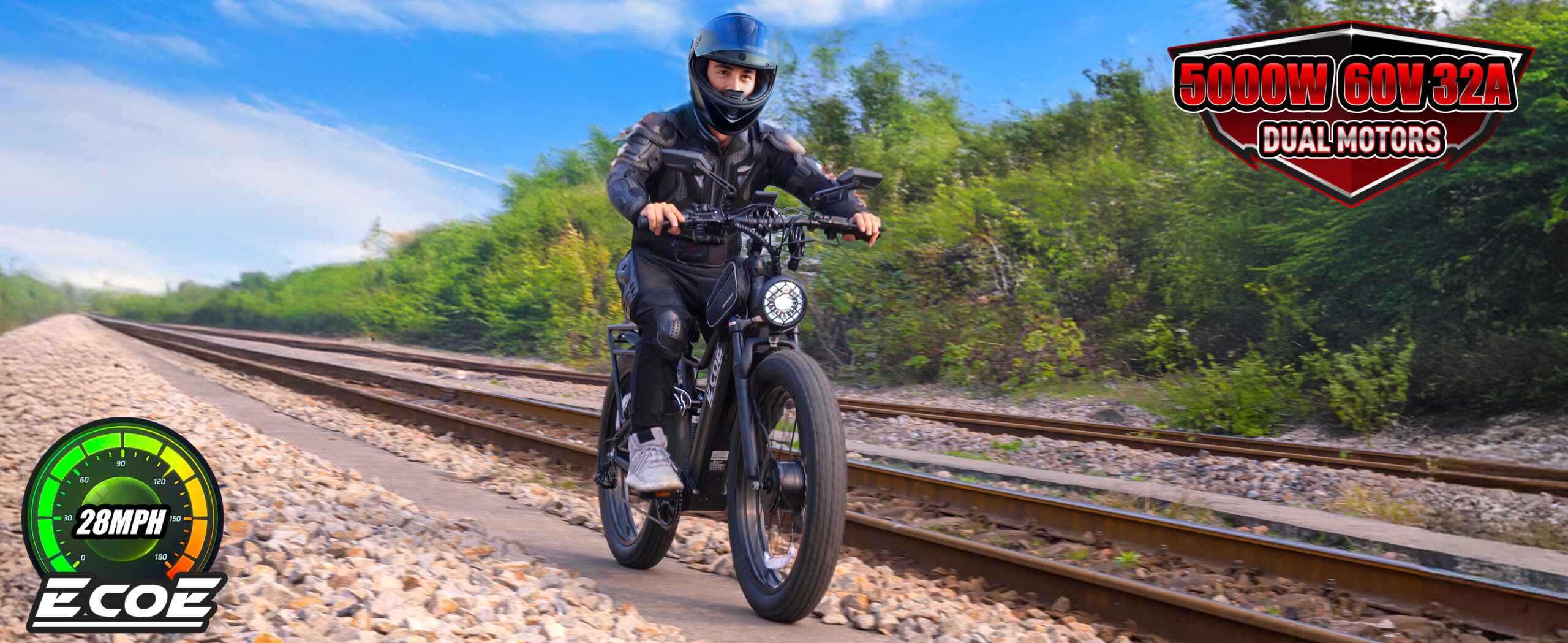
Classification and Comparison of Electric Bicycle Battery Types
The EcoE 5000W electric bike Powerful Motor: EcoE is equipped with a 60V 5000W high-speed brushless motor. Due to different loads and road conditions, the electric bike drive system provides adjustable assistance, allowing you to stay healthy, relax, and exercise.Accessories: This electric bike accessory set includes a rearview mirror, water bottle holder and bottle, a sturdy phone mount, and a waterproof phone pouch. The reinforced cargo rack allows you to easily carry extra items needed for your ride. Additionally, if you need more accessories, you can purchase a detachable storage rack, passenger safety seat, trailer, and more.60V 32AH Battery: The bike is equipped with a high-capacity, removable 32AH battery, providing longer range per charge and over 1000 charge cycles. With pedal assist, the fat tire e-bike can travel 35-80 miles, depending on riding mode, load, and terrain. You can also purchase a spare battery for extended trips.Comfort and Versatility: This fat tire electric bike comes with dual front suspension and rear shocks to reduce impact and strain during rides. Its 26-inch wheels, 4-inch tires, and SHIM 7-speed system offer excellent grip across diverse terrains. Front and rear disc brakes ensure safe, responsive stopping, whether on mountain trails or city streets. – Type Advantages Disadvantages Application Scenarios Notes Lead-Acid Low cost, high safety, overcharge resistance, easy recycling Heavy (15-30kg), low energy density (30-50Wh/kg), short cycle life (300-500 cycles) Entry-level commuter bikes, cargo bikes Requires regular maintenance; poor cold performance Lithium-Ion Lightweight (3-8kg), high energy density (100-260Wh/kg), long cycle life (500-1000 cycles) High cost, fire risk at high temperatures, requires special charger High-end commuter bikes, folding bikes Avoid overcharging/discharging Lithium Iron Phosphate Extremely safe, high temperature resistance, very long cycle life (2000+ cycles) Poor cold performance, lower energy density (120-170Wh/kg), heavier (8-12kg) Long-range electric vehicles, shared bikes Better for high-temperature environments Nickel-Metal Hydride Eco-friendly, overcharge resistance, […]
Read more

Expert’s Guide to Electric Bikes for Adults: What to Look for in 2025
When choosing an electric bicycle suitable for adults, it is crucial to understand the latest technological trends and future development directions. Here are some key factors to help you make an informed decision in 2025: 1. Types of Electric Bicycles Pedelec (Pedal-Assist Electric Bicycle): The motor provides assistance when you pedal, enhancing the riding experience. Throttle-Controlled Electric Bicycle: Equipped with a throttle that allows for starting and accelerating without pedaling. Full-Power Electric Bicycle: Entirely driven by the motor, eliminating the need for manual pedaling. 2. Motor Types and Placement Hub Motor: Installed in the front or rear wheel, providing direct drive with simple maintenance. Mid-Drive Motor: Located near the pedal axle, offering balanced weight distribution and a natural riding feel. 3. Battery Capacity and Range Capacity: Typically measured in watt-hours (Wh), affecting the battery’s energy storage capability. Range: Depends on battery capacity, riding conditions, and assistance level. Choose a range that meets your daily riding needs. 4. Technological Integration Smart Features: Such as smartphone-connected apps that provide navigation, cycling statistics, and anti-theft functions. Adjustable Assistance Modes: Tailor the assistance level according to terrain and riding needs. 5. Regulations and Restrictions Speed Limits: Be aware of local speed limits and classification regulations for electric bicycles. Usage Areas: Some areas may restrict the use of electric bicycles, especially on unpaved roads or in specific parks. Additional Considerations Lightweight Design: Manufacturers are focusing on developing lighter electric bicycles to enhance portability and handling. Enhanced Battery Technology: Newer batteries offer longer lifespans and faster charging speeds. Integrated Systems: Electric bicycles are evolving towards higher integration, cleverly incorporating batteries and motors into the frame design. Before making a purchase, it is recommended that you test ride different models to assess comfort, handling, and features that meet your needs. With continuous technological advancements, electric bicycles in […]
Read more
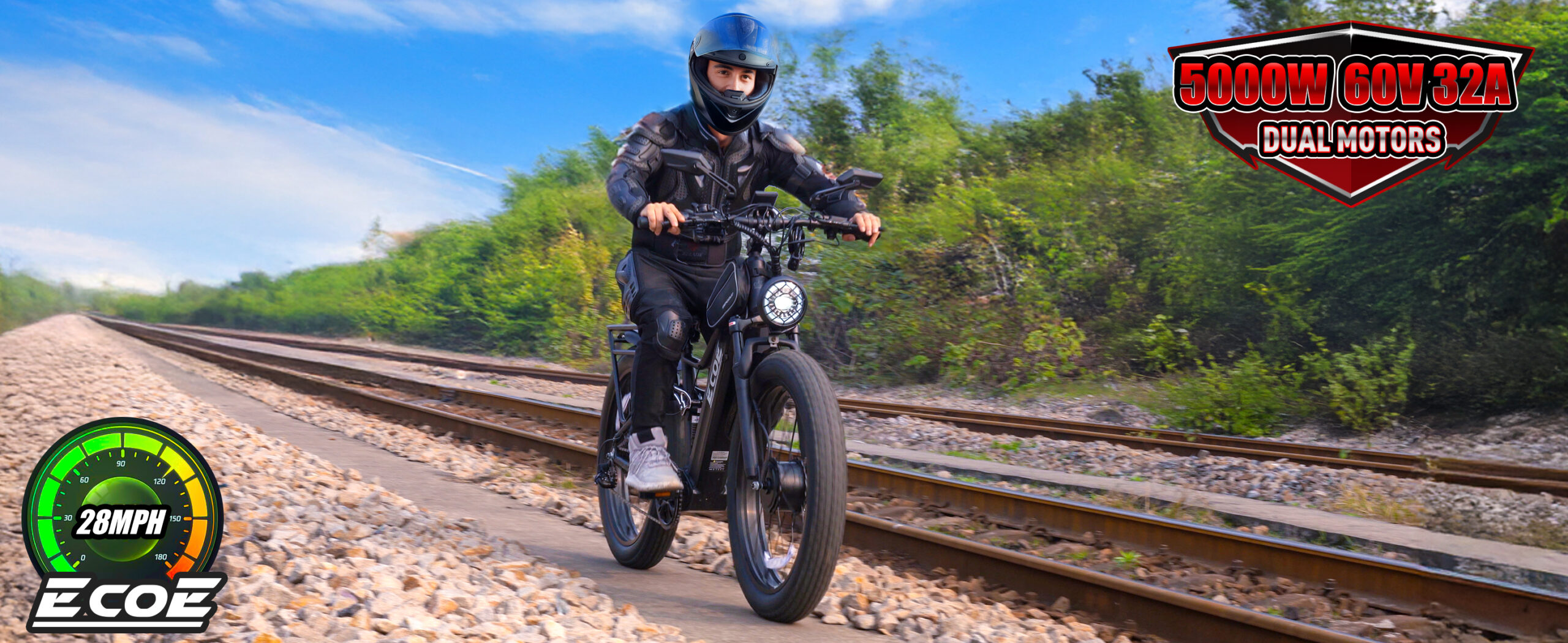
The Rise of Electric Bikes for Adults: Benefits for Health, Environment, and Wallet
As urban transportation continues to evolve, electric bicycles are rapidly becoming the preferred tool for adult commuting and leisure. They not only enhance the convenience of cycling but also bring significant benefits in terms of health, environment, and economy. In recent years, we have witnessed the growing popularity of electric bicycles among adults. Behind this trend lies a pursuit of benefits in health, environment, and economy. Health Benefits Many people might think that electric bicycles reduce the amount of exercise compared to traditional cycling, but this is not the case. Studies have shown that riding an electric bicycle still provides moderate-intensity exercise, which helps improve cardiovascular health, control weight, and enhance overall muscle strength. For those who may be limited by physical fitness and unable to engage in traditional cycling, electric bicycles offer a viable alternative, allowing them to enjoy the pleasure of cycling while reaping health benefits. Environmental Impact In terms of the environment, electric bicycles also have significant advantages. Compared to traditional gasoline-powered cars, electric bicycles produce much lower carbon emissions, contributing to reduced air pollution and greenhouse gas emissions. Additionally, electric bicycles are more energy-efficient, and their production process has a relatively smaller environmental impact. Choosing an electric bicycle as a daily mode of transportation is one of the practical contributions we can make to protect the environment. Economic Advantages From an economic perspective, electric bicycles save us a considerable amount of transportation costs. Compared to the high costs of owning and maintaining a car, the purchase and maintenance expenses of electric bicycles are much lower. Moreover, many cities provide dedicated lanes and parking facilities for electric bicycles, further reducing commuting costs and time. In the long run, an electric bicycle is undoubtedly a wise investment. In practical use, many users have also shared their positive experiences. […]
Read more

Classification of Electric Bicycles by Structural Design
The EcoE 5000W electric bike Powerful Motor: EcoE is equipped with a 60V 5000W high-speed brushless motor. Due to different loads and road conditions, the electric bike drive system provides adjustable assistance, allowing you to stay healthy, relax, and exercise.Accessories: This electric bike accessory set includes a rearview mirror, water bottle holder and bottle, a sturdy phone mount, and a waterproof phone pouch. The reinforced cargo rack allows you to easily carry extra items needed for your ride. Additionally, if you need more accessories, you can purchase a detachable storage rack, passenger safety seat, trailer, and more.60V 32AH Battery: The bike is equipped with a high-capacity, removable 32AH battery, providing longer range per charge and over 1000 charge cycles. With pedal assist, the fat tire e-bike can travel 35-80 miles, depending on riding mode, load, and terrain. You can also purchase a spare battery for extended trips.Comfort and Versatility: This fat tire electric bike comes with dual front suspension and rear shocks to reduce impact and strain during rides. Its 26-inch wheels, 4-inch tires, and SHIM 7-speed system offer excellent grip across diverse terrains. Front and rear disc brakes ensure safe, responsive stopping, whether on mountain trails or city streets. – Structural Type Subtypes Description Advantages Disadvantages Ideal Use Cases Cost Range Standard Frame Traditional Diamond Frame Resembles a conventional bicycle with a rigid diamond-shaped frame. Balanced weight distribution, easy maintenance, compatible with accessories. Limited cargo capacity, less stable at high speeds. Daily commuting, casual rides, entry-level users. $300–$1,500 Step-Through Frame Low-top tube design for easy mounting/dismounting, often with rear storage. Enhanced accessibility, ideal for riders in skirts or heavy clothing. Weaker frame rigidity, limited off-road capability. Urban commuting, senior riders, short-distance errands. $400–$2,000 Folding Frame Compact Foldable Frame collapses for storage in small spaces (e.g., under desks or in car trunks). Ultra-portable, fits […]
Read more
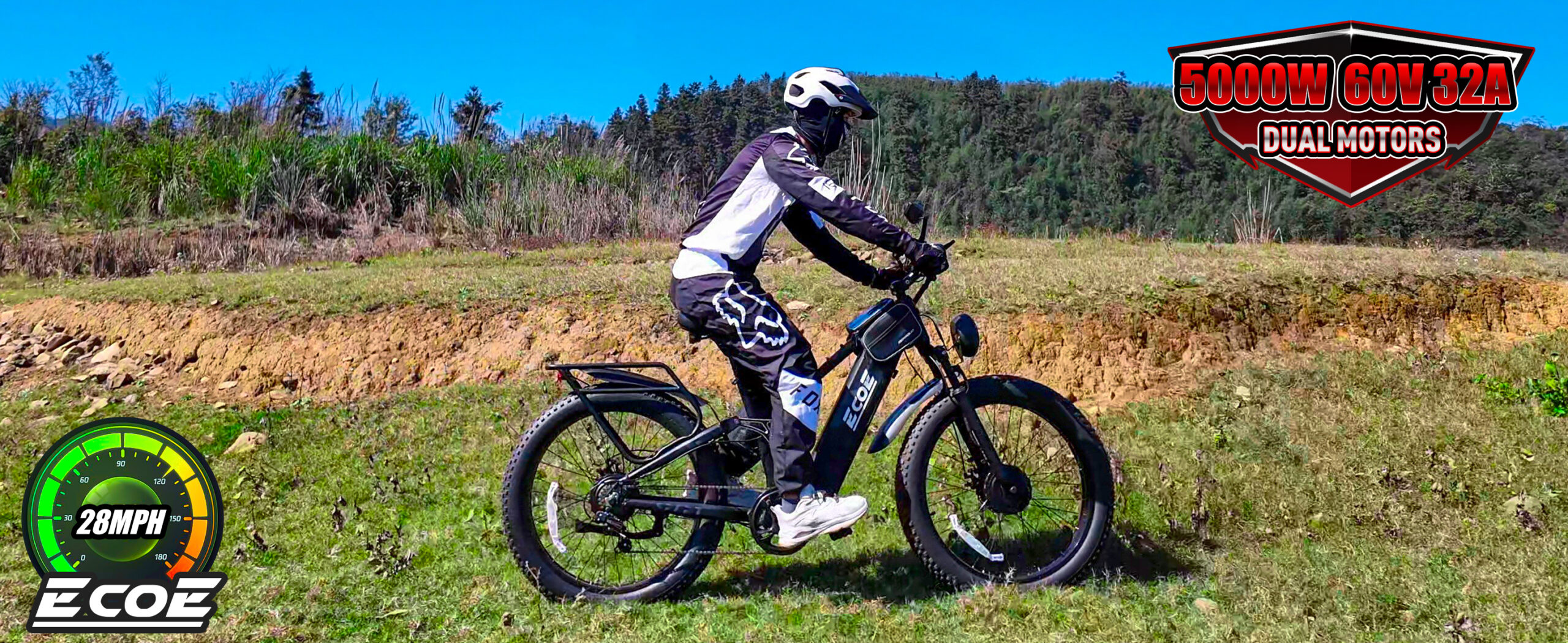
Classification of E-bikes by Usage and Their Advantages/Disadvantages
The EcoE 5000W electric bike Powerful Motor: EcoE is equipped with a 60V 5000W high-speed brushless motor. Due to different loads and road conditions, the electric bike drive system provides adjustable assistance, allowing you to stay healthy, relax, and exercise.Accessories: This electric bike accessory set includes a rearview mirror, water bottle holder and bottle, a sturdy phone mount, and a waterproof phone pouch. The reinforced cargo rack allows you to easily carry extra items needed for your ride. Additionally, if you need more accessories, you can purchase a detachable storage rack, passenger safety seat, trailer, and more.60V 32AH Battery: The bike is equipped with a high-capacity, removable 32AH battery, providing longer range per charge and over 1000 charge cycles. With pedal assist, the fat tire e-bike can travel 35-80 miles, depending on riding mode, load, and terrain. You can also purchase a spare battery for extended trips.Comfort and Versatility: This fat tire electric bike comes with dual front suspension and rear shocks to reduce impact and strain during rides. Its 26-inch wheels, 4-inch tires, and SHIM 7-speed system offer excellent grip across diverse terrains. Front and rear disc brakes ensure safe, responsive stopping, whether on mountain trails or city streets. – 1. Commuter E-bikes 2. Mountain E-bikes 3. Folding E-bikes 4. Cargo E-bikes 5. Sport/Racing E-bikes 6. Urban Leisure E-bikes Comparison Table Type Purpose Advantages Disadvantages Suitable Scenarios Commuter Daily travel Long range, comfort, storage Plain design, moderate load Urban commuting Mountain Off-road cycling Suspension, climbing, durability Heavy, costly Mountain trails Folding Portable use Compact, lightweight, foldable Short range, limited load Public transport Cargo Cargo delivery High load, long battery, storage Bulky, expensive Logistics, moving Sport/Racing Competitive cycling High speed, lightweight, gears Uncomfortable, battery-dependent Sports events Urban Leisure Leisure activities Stylish, stable, two-person option Weak power, low load Park rides, sightseeing
Read more
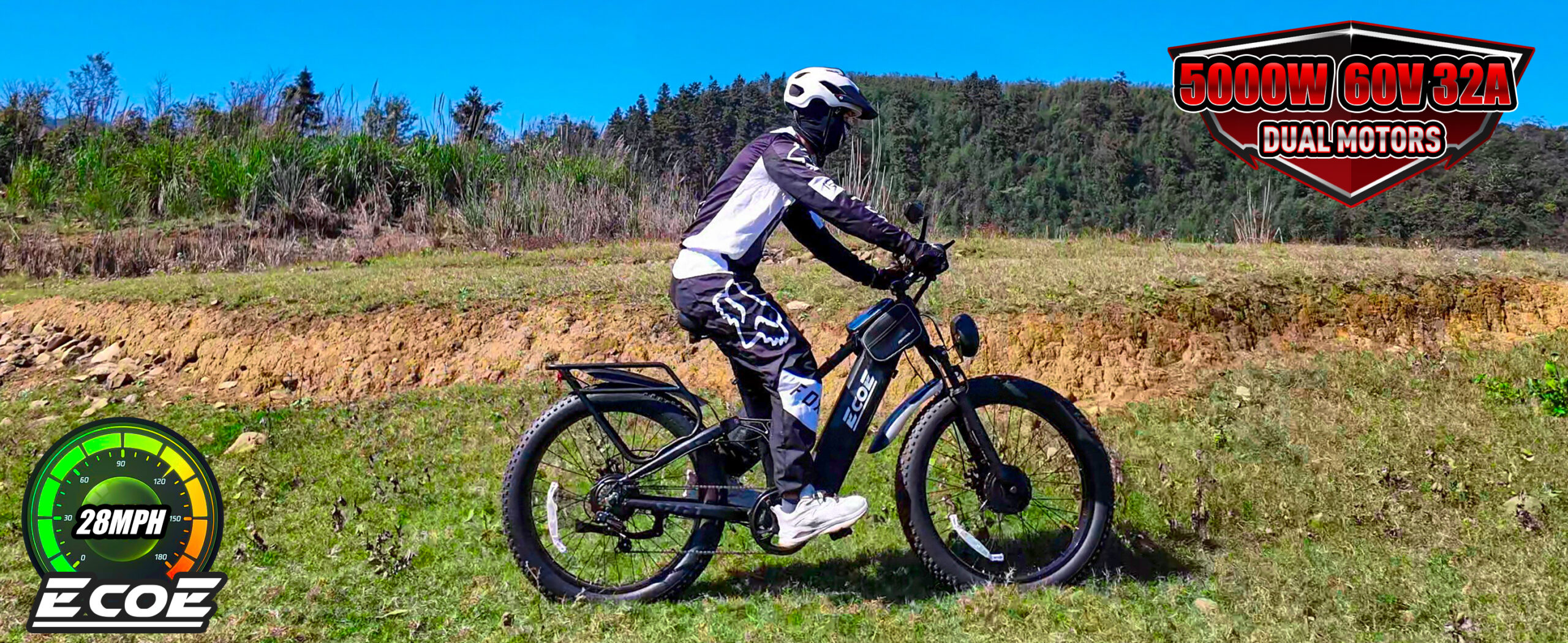
Comprehensive Review: The Best Electric Bikes for Adults Offering Maximum Comfort
As electric bicycles become increasingly popular for adult commuting and leisure, comfort has emerged as a crucial factor in choosing the right e-bike. Below, we will explore several models renowned for their comfort, helping you find the perfect fit. When searching for an electric bicycle suitable for adults, comfort is undoubtedly one of the key factors. After all, whether it’s for daily commuting or weekend outings, a comfortable saddle, ergonomic design, and a smooth riding experience can significantly enhance our enjoyment of the ride. Firstly, the Aventon Level 3 Commuter is a highly acclaimed model. It features adjustable handlebars and a suspension seatpost, offering a range of up to 70 miles, making it ideal for urban commuting. One user shared, “The comfort of this bike exceeded my expectations, making daily commuting a breeze and a pleasure.” Secondly, the Ecoe Electric Bike’s 5000W dual-motor e-bike is also worth considering. This model boasts a powerful drive system and all-terrain capability, equipped with 26-inch, 4-inch wide tires and a full suspension system to ensure a smooth ride on various terrains. Additionally, its high-capacity 60V 32AH removable battery supports long-distance riding, catering to the needs of different users. For riders seeking foldability and portability, the Lectric XP 3.0 is a model worth considering. It is not only easy to fold and store but also provides a comfortable riding experience, making it suitable for urban dwellers with limited space. One user commented, “The Lectric XP 3.0 allows me to navigate the city with ease, and its folding design is incredibly convenient.” Moreover, the Rad Power Bikes RadRover 6, with its robust aluminum frame, 26-inch wide tires, and 750-watt motor, offers a stable and comfortable ride, especially for adventure-seeking cyclists. One rider remarked, “The RadRover 6 performs exceptionally well on various terrains, providing a very smooth […]
Read more
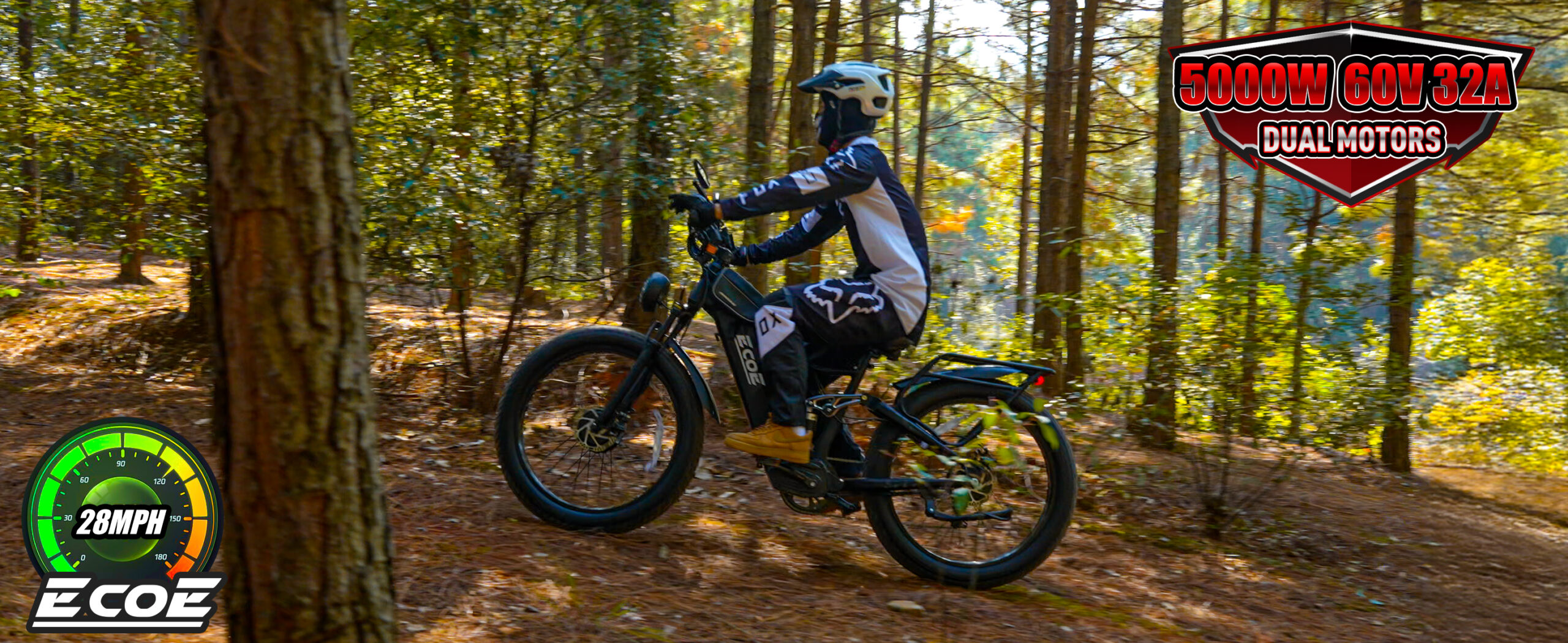
Mar 31, 2025
|
0 comments
Electric Bikes for Adults: Safety, Efficiency, and Cost-Effective Commuting
In the fast-paced urban landscape of the U.S., electric bikes have become a practical and eco-friendly alternative for adults looking to commute efficiently without breaking the bank. But how do you find the right e-bike that balances safety, performance, and affordability? We, as a group of cycling enthusiasts, embarked on a journey to test and explore different electric bikes, uncovering what truly matters when choosing the best ride. Through real-world trials, expert insights, and firsthand experiences from riders worldwide, we’ll delve into the core aspects of e-bike commuting—safety, efficiency, and cost-effectiveness. this guide will help you navigate the ever-evolving world of electric bikes. A few years ago, we wouldn’t have considered electric bikes a serious commuting option. Back then, they seemed like a niche product—either overpriced or underpowered. But today, things have changed. With advancements in battery technology, motor efficiency, and urban infrastructure, e-bikes have become a viable, cost-effective, and enjoyable way to get around. Our friend Mark, a software developer in San Francisco, switched to an e-bike last year after getting frustrated with rising gas prices and endless traffic jams. “I used to spend over an hour in traffic daily, burning fuel and patience,” he told us. “Now, I cruise through the city in half the time, and my commute costs me next to nothing.” Stories like Mark’s are becoming increasingly common, showing how e-bikes are not just a trend but a fundamental shift in urban transportation. But it wasn’t until we started testing different models ourselves that we realized how much variation there is in performance, safety features, and real-world usability. That’s where our deep dive into efficiency and safety began. Efficiency is the key reason many of us switched to electric bikes. But what does “efficient” really mean? Is it about a powerful motor? A long-lasting battery? […]
Read more

Mar 31, 2025
|
0 comments
Classification of Electric Bicycles by Drive System
The EcoE 5000W electric bike Powerful Motor: EcoE is equipped with a 60V 5000W high-speed brushless motor. Due to different loads and road conditions, the electric bike drive system provides adjustable assistance, allowing you to stay healthy, relax, and exercise.Accessories: This electric bike accessory set includes a rearview mirror, water bottle holder and bottle, a sturdy phone mount, and a waterproof phone pouch. The reinforced cargo rack allows you to easily carry extra items needed for your ride. Additionally, if you need more accessories, you can purchase a detachable storage rack, passenger safety seat, trailer, and more.60V 32AH Battery: The bike is equipped with a high-capacity, removable 32AH battery, providing longer range per charge and over 1000 charge cycles. With pedal assist, the fat tire e-bike can travel 35-80 miles, depending on riding mode, load, and terrain. You can also purchase a spare battery for extended trips.Comfort and Versatility: This fat tire electric bike comes with dual front suspension and rear shocks to reduce impact and strain during rides. Its 26-inch wheels, 4-inch tires, and SHIM 7-speed system offer excellent grip across diverse terrains. Front and rear disc brakes ensure safe, responsive stopping, whether on mountain trails or city streets. – Drive System Subtypes Description Advantages Disadvantages Ideal Use Cases Cost Range Hub Motor Geared Hub Motor Motor integrated into wheel hub with planetary gears for torque multiplication. High torque for acceleration and hills, lightweight design, low maintenance. Gear wear over time, higher noise during operation, slightly heavier than direct drive. Urban commuting, moderate hills, budget-conscious riders. $300–$1,500 Direct Drive Hub Motor Brushless motor with no gears, directly driving the wheel. Silent operation, long lifespan, efficient energy recovery via regenerative braking. Low torque at low speeds, heavier weight, higher resistance when pedaling without power. Flat terrain, high-speed cruising, minimal maintenance. $500–$2,000 Mid-Drive Motor Standard […]
Read more
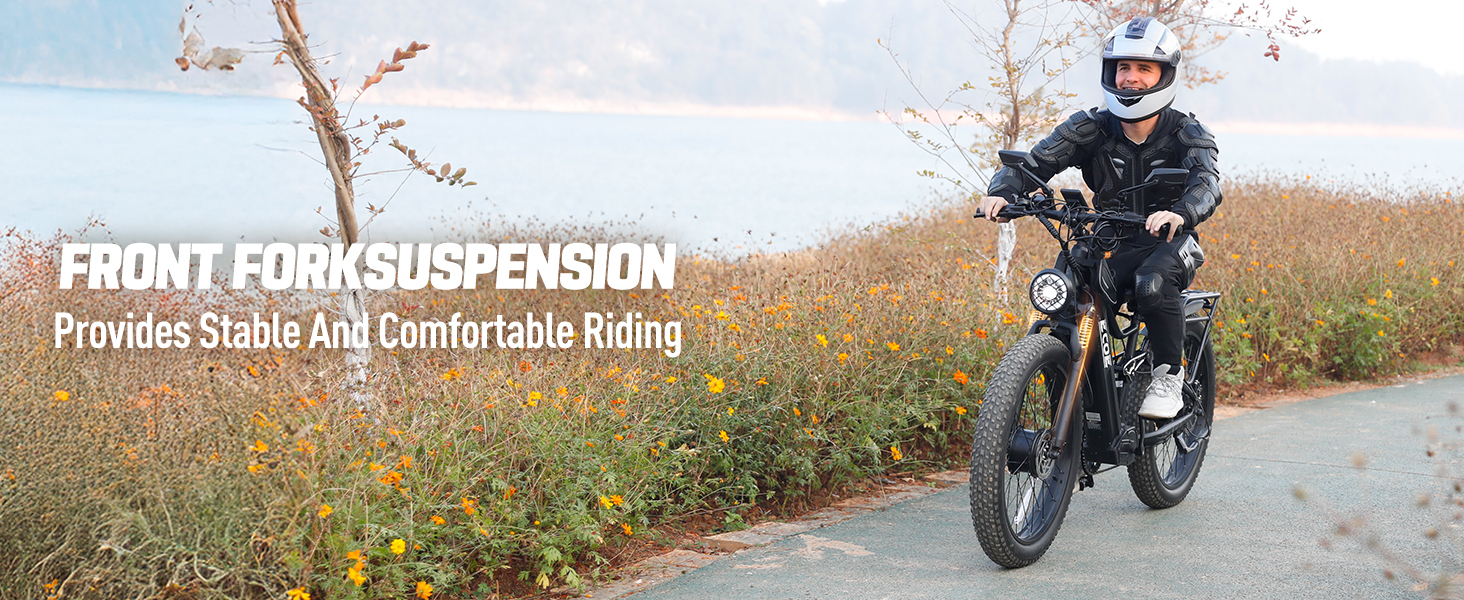
Mar 31, 2025
|
0 comments
Classification of Electric Bicycles
The EcoE 5000W electric bike Powerful Motor: EcoE is equipped with a 60V 5000W high-speed brushless motor. Due to different loads and road conditions, the electric bike drive system provides adjustable assistance, allowing you to stay healthy, relax, and exercise.Accessories: This electric bike accessory set includes a rearview mirror, water bottle holder and bottle, a sturdy phone mount, and a waterproof phone pouch. The reinforced cargo rack allows you to easily carry extra items needed for your ride. Additionally, if you need more accessories, you can purchase a detachable storage rack, passenger safety seat, trailer, and more.60V 32AH Battery: The bike is equipped with a high-capacity, removable 32AH battery, providing longer range per charge and over 1000 charge cycles. With pedal assist, the fat tire e-bike can travel 35-80 miles, depending on riding mode, load, and terrain. You can also purchase a spare battery for extended trips.Comfort and Versatility: This fat tire electric bike comes with dual front suspension and rear shocks to reduce impact and strain during rides. Its 26-inch wheels, 4-inch tires, and SHIM 7-speed system offer excellent grip across diverse terrains. Front and rear disc brakes ensure safe, responsive stopping, whether on mountain trails or city streets. – Classification Type Description Key Features Driving Method Hub Motor Motor integrated into the wheel hub, common in urban commuter bikes. Simple structure, low maintenance, ideal for flat terrain. Mid-Drive Motor Motor located at the bottom bracket, paired with gears for varied terrain. Efficient power transfer, suitable for hills and off-road. Friction Drive Motor drives the wheel via a roller or belt. Low cost but prone to tire wear and slippage in wet conditions. Usage Commuter/Urban Designed for daily city commuting, with comfort and storage features. Lightweight, fenders, racks, and integrated lights. Mountain Built for rough terrain with suspension, wide tires, and robust frames. […]
Read more
